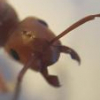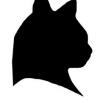I sadly do not have measurements, but here's the best pictures I could get.
Caught in the alley in my backyard in Michigan.
I've been getting a lot of mixed reviews on what species they are, and currently most of the reviews state Formica Fusca.
I am still very very new to ant keeping, so any advice or pointers would be appreciated!





















